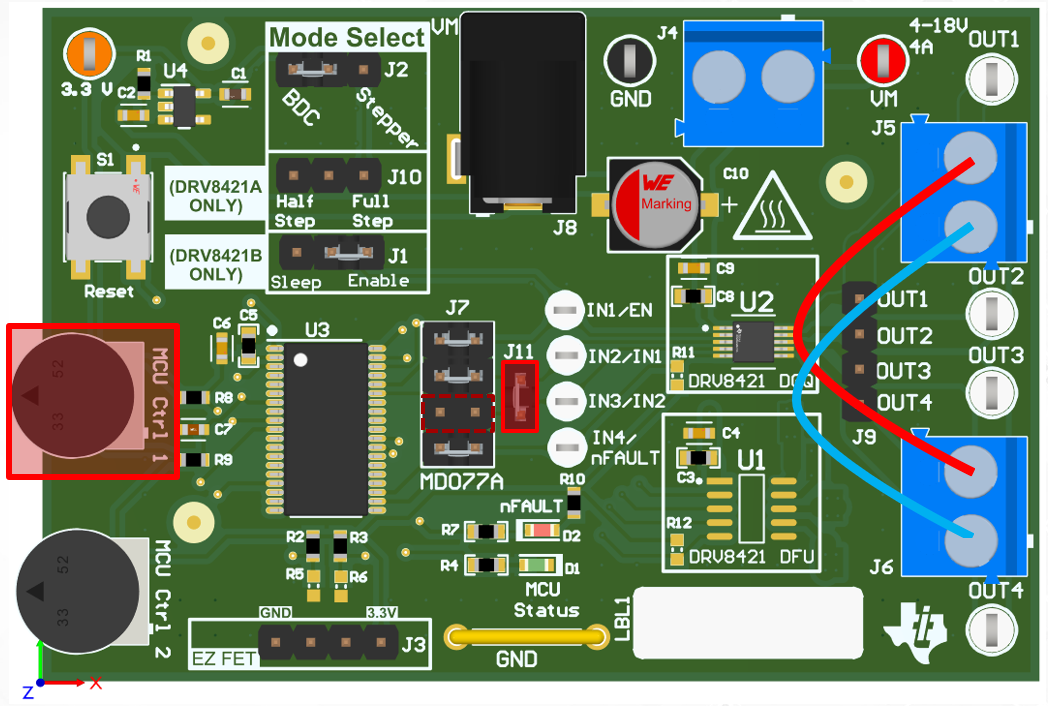SLOU571 June 2024
- 1
- Description
- Get Started
- Features
- Applications
- 6
- 1Evaluation Module Overview
- 2Hardware
- 3Hardware Design Files
- 4Additional Information
2.1.7.2 DRV8421B: Parallel Mode
The two H-bridges can be used in parallel to deliver twice the current to a single motor. For the DRV8421B, the 2-wire version, parallel mode operation can be achieved by taking the following steps:
- IN1 and IN2 must be tied together
- Remove third jumper from the top from jumper (J7)
- Use this jumper to populate jumper (J11)
- OUT1 and OUT3 must be tied together
- Use external wire connections
- OUT2 and OUT4 must be tied together
- Use external wire connections
While in parallel mode, the speed adjust comes from the MCU Ctrl 1 input potentiometer.
 Figure 2-14 Parallel Mode Operation with
DRV8421B
Figure 2-14 Parallel Mode Operation with
DRV8421B